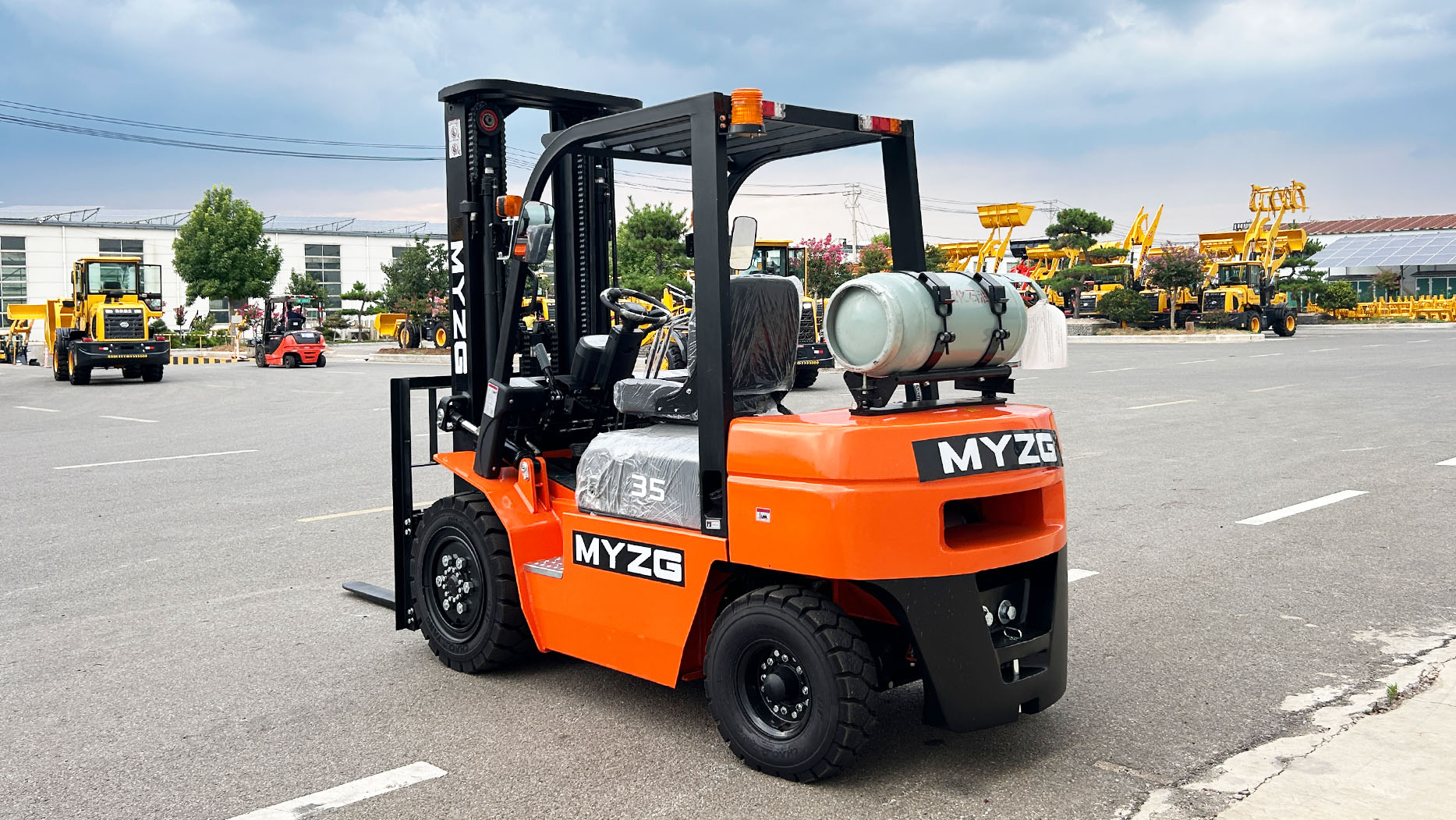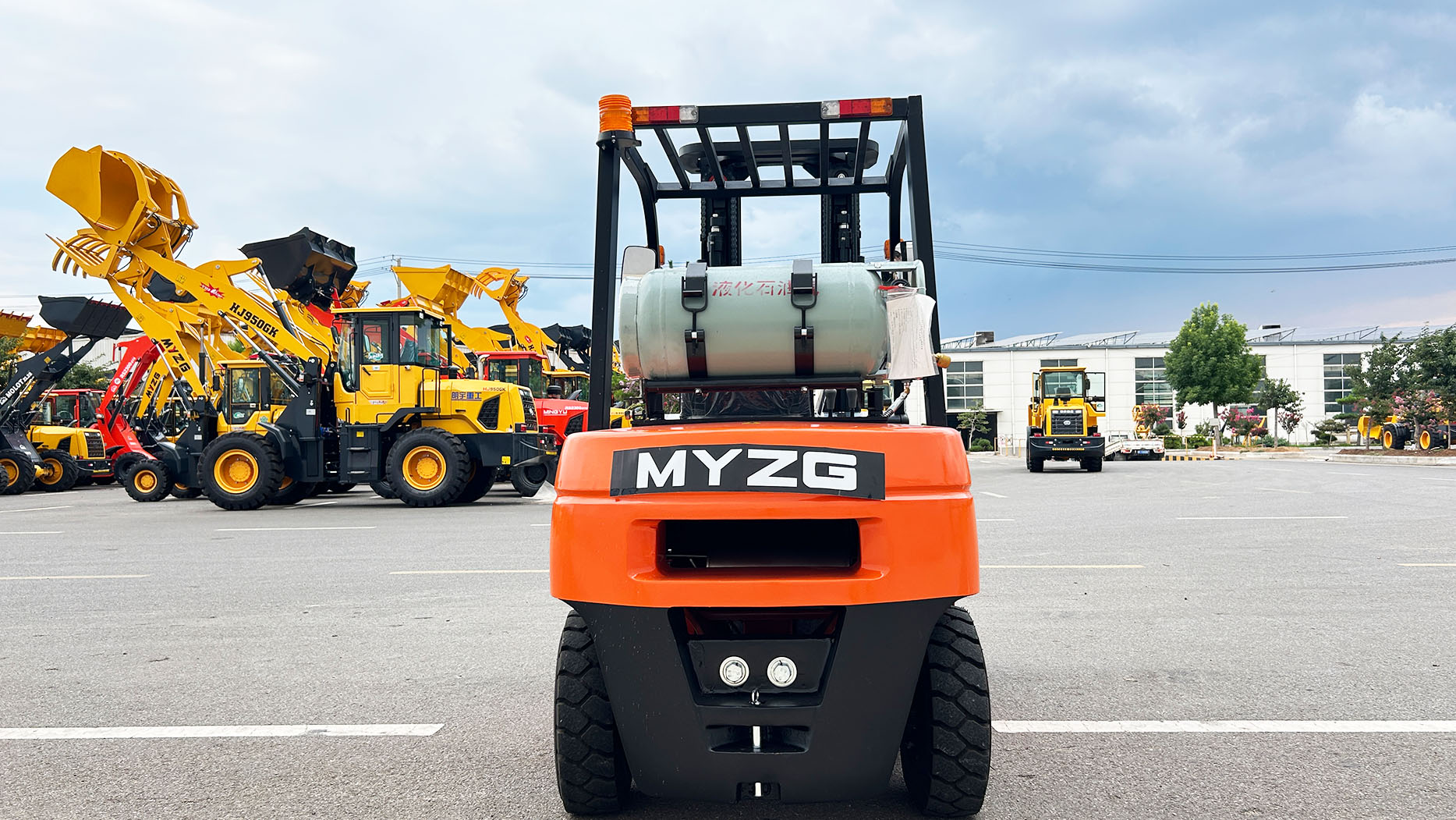Choosing the right forklift for your operation is a critical decision that balances upfront investment with long-term performance and cost. Two of the most popular and versatile options are LPG dual-fuel forklifts and electric forklifts. While both are highly effective in a variety of material handling tasks, they are fundamentally different in how they operate, their performance characteristics, and their total cost of ownership. Understanding these distinctions is key to selecting the machine that best fits your business needs, whether you're a small warehouse or a large logistics hub.
This article will break down the key differences between LPG dual-fuel and electric forklifts, comparing their performance, operational costs, and ideal applications. By the end, you'll have a clear picture of which powerhouse is the right fit for your fleet.
1. Performance and Power: Different Kinds of Strength
Performance is not just about raw power; it's about how that power is delivered and sustained throughout the workday.
LPG Dual-Fuel Forklifts:
Power Source: An internal combustion engine running on LPG (or gasoline). This provides high torque and horsepower, particularly in larger models.
Performance: They deliver consistent, strong power, making them excellent for heavy lifting and sustained operation over multiple shifts. The ability to switch to gasoline provides a power boost or backup fuel, adding to their robustness. This is why you'll often see powerful, large-capacity models, including rough-terrain variants like a 4x4 forklift, using this technology. They handle ramps and inclines with ease.
Limitations: The power is not instant like an electric motor, and the engine must be running to operate hydraulics.

Electric Forklifts:
Power Source: A powerful electric motor fueled by a large industrial battery (lead-acid or lithium-ion).
Performance: Electric motors provide instant, maximum torque from a standstill. This makes them incredibly responsive and ideal for stop-and-go tasks. They are very quiet and have zero tailpipe emissions, which is why they dominate indoor applications. They are also known for their precision, making them well-suited for tasks that require delicate movements, such as a forklift reach truck in a narrow aisle warehouse.
Refueling/Recharging: Recharging is not instantaneous. A full charge for a lead-acid battery can take 8-10 hours, followed by a cool-down period. This often requires a dedicated charging area and a spare battery for multi-shift operations. Lithium-ion batteries offer faster charging and opportunity charging, but at a higher cost.
Limitations: Continuous heavy lifting on steep inclines can drain the battery faster and may not be as sustained as an internal combustion engine. The overall power is limited by the battery's charge level.
2. Operational Environment: Where They Thrive
The physical workspace is a primary factor in choosing the right forklift.
LPG Dual-Fuel Forklifts:
Ideal Environment: Dual-fuel forklifts are the ultimate bridge between indoor and outdoor use. On LPG, they are suitable for well-ventilated indoor spaces, minimizing emissions. Outdoors, they perform exceptionally well on a variety of surfaces and can switch to gasoline for a power boost. This makes them a great choice for logistics companies that load and unload both inside a warehouse and outside in a yard. They are also available in rugged variants, such as a 4x4 forklift, designed for demanding outdoor work.
Limitations: Even with LPG, they produce emissions, making them unsuitable for food-grade, clean-room, or poorly ventilated indoor environments. They are also louder than electric models.
Electric Forklifts:
Ideal Environment: Electric forklifts are the undisputed champions of the indoor environment. Their zero emissions, quiet operation, and lack of exhaust fumes make them perfect for food processing, pharmaceutical warehouses, and any facility where air quality is a top priority. They are also a great fit for cold storage warehouses, as there are no cooling systems to worry about. A compact model, such as a mini forklift, is excellent for navigating tight spaces and narrow aisles.
Limitations: While some are weather-proofed, they are not ideal for wet or highly dusty outdoor environments, which can damage their sensitive electronic components. Their performance can also degrade in extreme cold.
 3. Cost of Ownership: A Long-Term View
3. Cost of Ownership: A Long-Term View
The initial purchase price is just the beginning. Total cost of ownership (TCO) is a more accurate measure of a forklift's true value.
LPG Dual-Fuel Forklifts:
Initial Cost: Generally lower than a comparable electric forklift.
Fuel Costs: Fuel prices for LPG and gasoline can fluctuate significantly, making this a variable operational expense.
Maintenance: Internal combustion engines require more frequent and extensive maintenance. This includes regular oil changes, filter replacements, and spark plug checks. Over time, these costs can add up.
Total Cost: TCO is often a mixed bag, with a lower upfront cost but higher ongoing fuel and maintenance expenses.
Electric Forklifts:
Initial Cost: Typically higher than a dual-fuel model. The battery and charging system represent a significant portion of this investment.
Fuel Costs: Electricity is generally more stable and often cheaper than fossil fuels. This results in much lower daily operational costs.
Maintenance: With fewer moving parts, electric forklifts require far less routine maintenance. There are no oil changes, spark plugs, or exhaust systems to service. The main maintenance for a lead-acid battery is regular watering and charging.
Total Cost: TCO can be lower over the machine's lifespan, with the higher initial investment offset by substantial savings on fuel and maintenance. However, the eventual need to replace an expensive battery must be factored in.
 4. Choosing the Right Forklift for Your Business
4. Choosing the Right Forklift for Your Business
The best forklift for you depends on your specific needs. Here's a quick guide:
Choose an LPG Dual-Fuel Forklift if:
You need one machine that can operate both indoors and outdoors.
Your facility has both smooth floors and uneven terrain.
You require a 4x4 forklift for challenging outdoor conditions.
You need to run the machine 24/7 and cannot afford the downtime of battery recharging.
Your primary tasks involve heavy loads or climbing inclines.
You're looking at competitive options from brands like MYZG and MINGYU that offer a balance of price and performance.
Choose an Electric Forklift if:
Your operations are primarily indoors or in clean, well-paved outdoor areas.
You need zero emissions and quiet operation.
Your tasks involve precision handling, such as in a narrow aisle with a forklift reach.
You want to minimize long-term fuel and maintenance costs.
You're operating in a space where a compact, highly maneuverable mini forklift is necessary.
You are committed to a sustainable, low-emissions fleet.
The choice between an LPG dual-fuel and an electric forklift is a strategic one. Both are excellent at what they do. The key is to match the forklift's strengths to the demands of your unique operational environment. By carefully considering performance, cost, and application, you can ensure your fleet is powered by the most efficient and effective machines for your business.
Post time:Aug.05.2025
